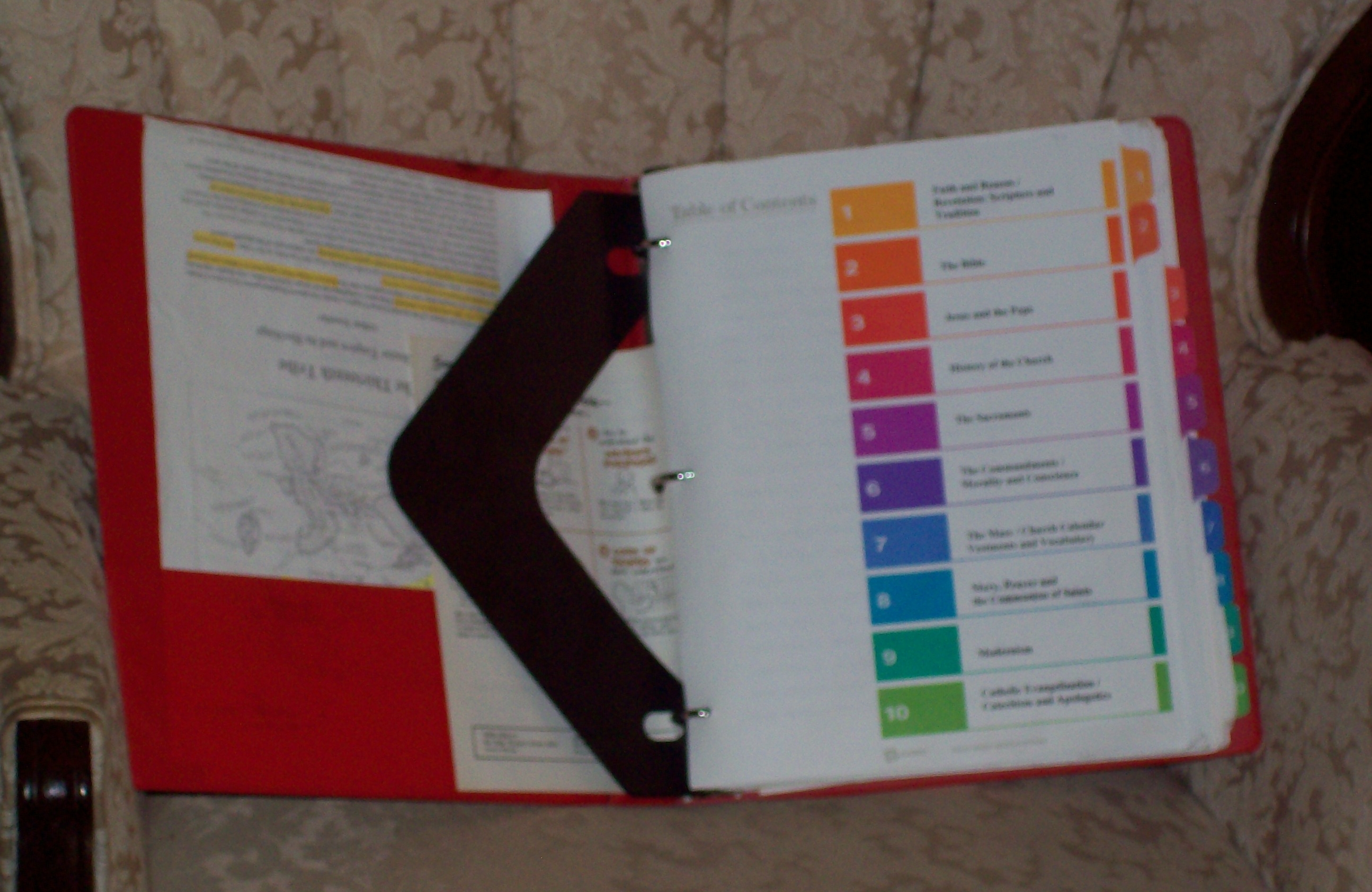Today, we welcome Christian LeBlanc to the New Evangelizers blogging team!
I’m about two-thirds of the way through an interesting book, Forming Intentional Disciples by Sherry Weddell. It’s a blueprint for kick-starting the New Evangelization at the parish level.
When I was on page 167, I read this bit: “…Doug and I went through our old RCIA outlines, and basically threw almost everything out…We began asking ourselves, “Where do we want people to be spiritually when they are baptized or making a profession of faith?”
Which reminds me of my wife and myself in 1999.
I’ve been teaching 6th-grade Catechism for so long that I forget that my wife & I taught RCIA and Adult Ed back around the turn of the century.
In the late 90s we had been running a topically-driven adult class. In covering those assorted topics, time was spent on learning how to respond to all the odd questions Catholics here in the Bible Belt are regularly asked:
- Why do y’all worship Mary, the Pope, saints, statues, and the “wafer god”?
- Where is x, y, and z in the Bible?
- Why can’t priests get married?
- Why can’t you contracept?
- Aren’t annulments just Catholic divorces?
For a given topic our usual system was to find some useful content on the internet. We’d hand it out a week ahead, and everyone would read it before the the next class. We would prepare a 30-minute lecture.
The next class would combine the lecture material and the handout into an hour’s worth of learning and informed discussion. It was a terrific system, and class prep had us reading all sorts of things: the Bible; the Catechism; the Catholic Encyclopedia; encyclicals; Ecumenical Council documents; Jack Chick tracts; books and articles by David Currie, Steve Ray, Scott Hahn, Karl Keating, Robert Sungenis, Jimmy Akin, and the like; and the famous/infamous Roman Catholicism by Loraine Boettner.
Then after two years of Adult Ed, the pastor asked us to do RCIA starting in the Fall of ’99. We said sure; we’d combine the RCIAers with the adult class crowd, which’d be good for both groups. We took the RCIA program materials home and started to compose a syllabus.
But we soon decided that the diocesan RCIA program wasn’t well-suited to Bible-Belt catechumens and candidates. The typical adult converts here were Evangelicals or Fundamentalists.
The Bible had persuaded them that the Catholic Church just might be the one true church which Christ had founded on Peter, and they were in RCIA to learn more about Catholicism from a Scriptural perspective.
The RCIA materials were orthodox, but were sourcing faith more from Vatican II documents and the Catechism than the Bible. That’s fine as far as it goes, but these folks were going to be defending and explaining their conversion to friends and family who’d reject Catholic sources out of hand.
So like the people on page 167, Janet and I asked ourselves, “Where do we want people to be when they are done with RCIA?” And our answer was that they should be able to evangelize their non-Catholic friends and family, even if that evangelization was limited to the kitchen table.
Outlining our RCIA vision to the pastor, we got the go-ahead. That fall we ran RCIA like Adult Ed but with a bit more organization. At the first class meeting, everyone received a red 3-ring binder, empty except for the 26-class syllabus, a Table of Contents, and 10 tabbed dividers corresponding to each section, which were:
1. Faith and Reason/ Revelation: Scripture and Tradition
2. The Bible
3. Jesus and the Pope
4. History of the Church
5. The Sacraments
6. The Commandments/ Morality and Conscience
7.The Mass/ Church Calendar/ Vestments and Vocabulary
8. Mary, Prayer, and the Communion of Saints
9. Modernism
10. Catholic Evangelization/ Catechism and Apologetics
Then each class worked like Adult Ed: one or more handouts to read the week before class and a lecture and discussion based on the handout.
Class discussions often included what they had talked about around a water cooler or a kitchen table the week before.
There was a lot of energy and excitement. And the cool thing was that the hole-punched handouts would go in a particular section of the red binder.
We had 26 class meetings, so each tabbed section would accumulate handouts for more than one class, e.g. we had three classes on the Bible, and 8 handouts (some were only a couple of pages). By the end of the year each person had a customized sourcebook that they were familiar with.
Anyway it was only in reading that bit on page 167 of Sherry’s book that it occured to me that our RCIA class was a good example of the New Evangelization. Major 1999 New Evangelization concepts included:
1. The explicit goal of evangelizing.
2. Action. That is, we didn’t talk about the need for an effective RCIA program; we made one.
3. A nimbleness and responsiveness to what people wanted/ needed to know.
4. Using new media/ no textbook/ multisourcing.
5. Content offered in the language spoken by the intended audience.
6. Lay initiative and responsibility.
This last one strikes me as the most important.
Recalling those years, and turning the pages in my old red binder, I realize now more that I did then what a substantial evangelical project that first year of RCIA had been; how it didn’t seem like a lot of work, but it was; what a little (well, big) family we all became, and still are when we see each other; and how the Holy Spirit moved within that class in a lovely way that I notice for the first time even as I write this.
Copyright © 2012, Christian LeBlanc
Leave a Reply
You must be logged in to post a comment.




